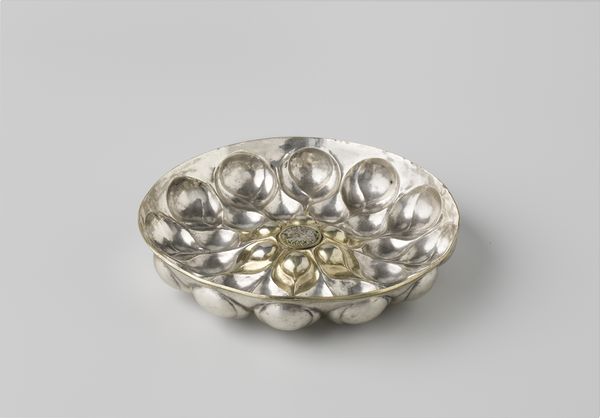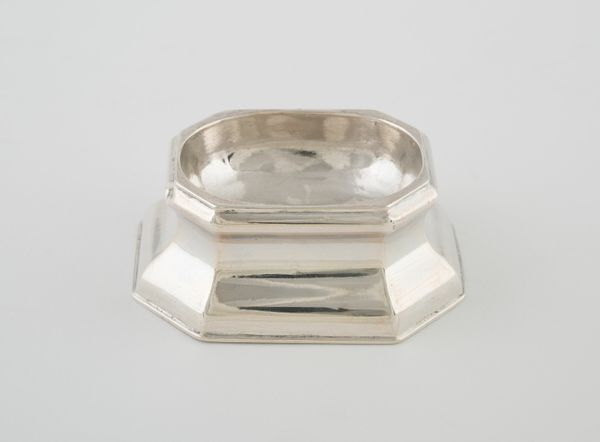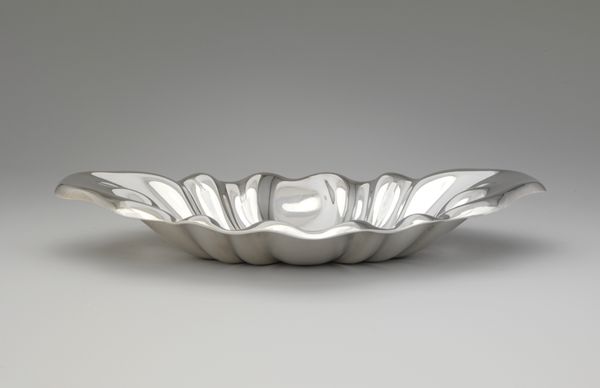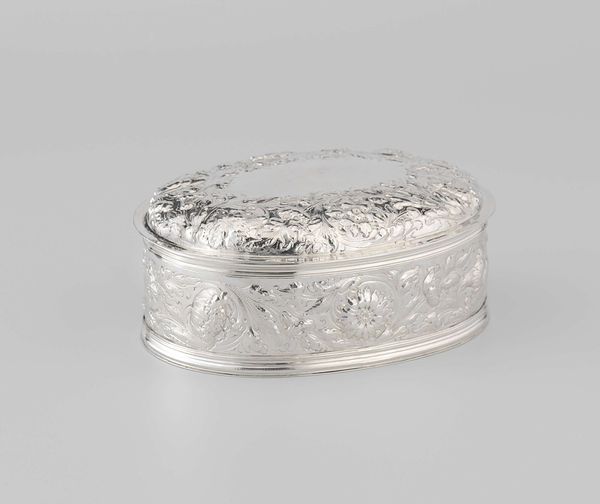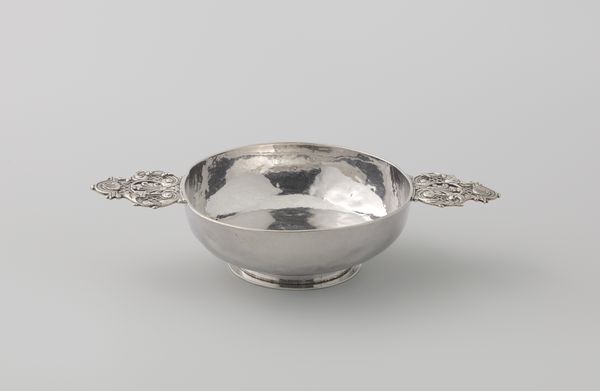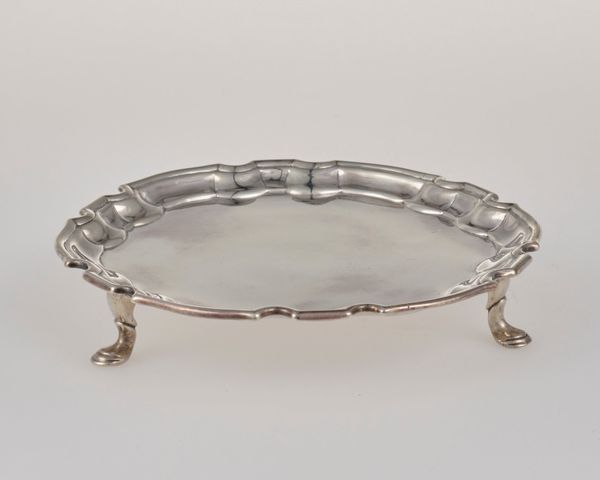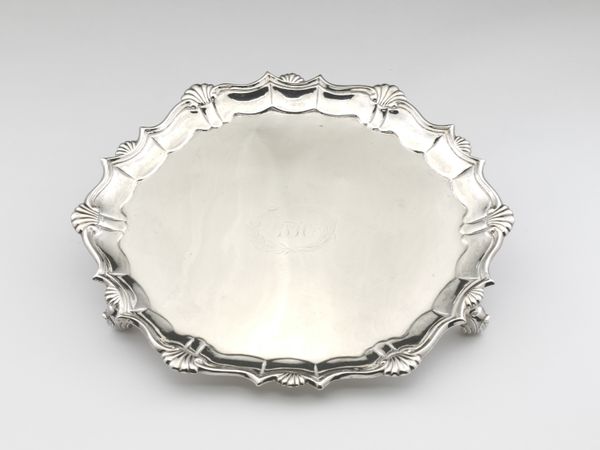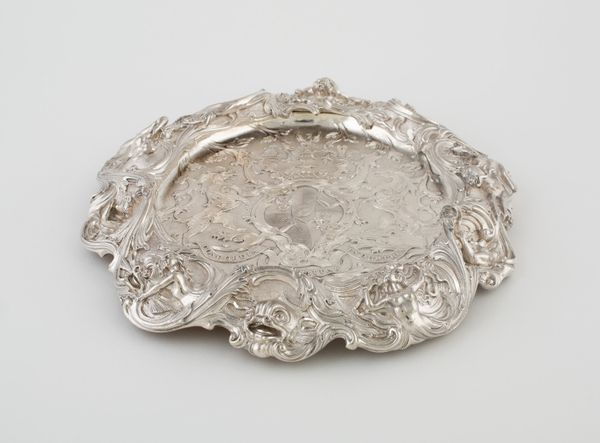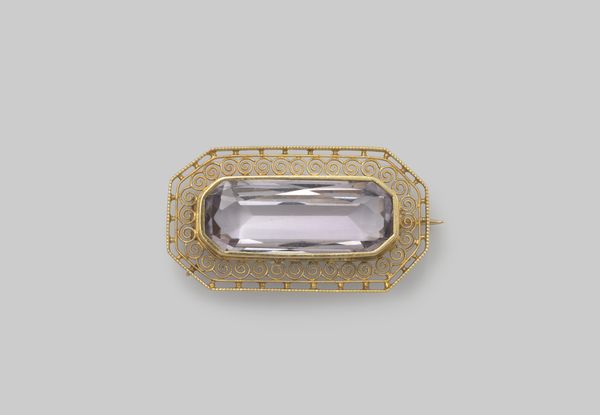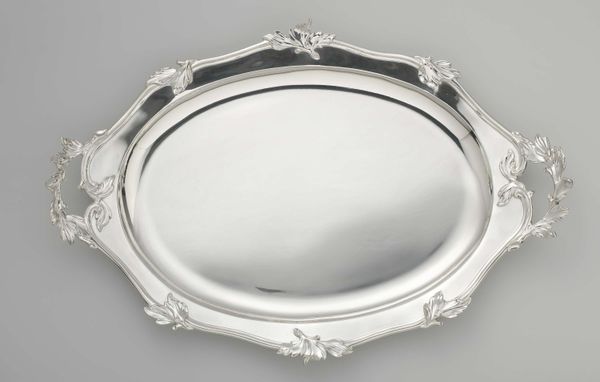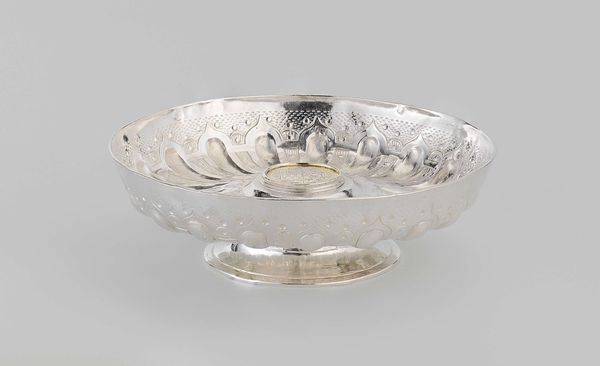
silver, metal, ceramic
#
art-nouveau
#
silver
#
metal
#
ceramic
#
vessel
#
decorative-art
Dimensions: 6.5 × 34 × 27.3 cm (2 9/16 × 13 3/8 × 10 3/4 in.)
Copyright: Public Domain
Curator: What strikes me immediately is its smooth, almost liquid quality. This “Dish (part of a set),” made around 1900 by the Gorham Manufacturing Company, radiates light with a muted, organic glow, very much in line with the Art Nouveau aesthetic. Editor: Indeed. One can trace the socio-economic boom in American manufacturing, exemplified by Gorham’s ambitious operation around this period. These luxurious wares were designed for a specific kind of consumption and display, weren’t they? Curator: Precisely. Silver, as a material, holds profound cultural weight, symbolizing status and taste. But more than that, this dish embodies a sort of… promise of abundance, a vessel for sustenance, both physical and symbolic. Look closely—floral motifs decorate the edge. What do they suggest to you? Editor: They read as indicators of both privilege and taste, of course. Floral ornamentation ties back into a larger conversation about the gentrification of spaces and commodities in rapidly expanding urban centers at the turn of the century. But I think we can also read it in terms of anxieties around social class, especially when thinking of what items this decorative plate might have displayed: cakes, pastries. Curator: Or even calling cards. This bowl could equally represent refined display and conspicuous, almost theatrical, etiquette of social mores in that period. Perhaps an interesting element to unpack is the degree to which such stylized forms attempt to reconnect to "natural" sources and a supposed idyllic pre-industrial state of existence. Editor: So there's a subtle critique of modernization inherent within its design? That is really interesting and insightful. Curator: Perhaps. Whether intentional or not, objects like this can give rise to some complex readings across different frames of time. It also underscores art's inevitable position in these webs of culture, class and continuity. Editor: Definitely, the cultural context shapes how we encounter objects across eras. This piece of decorative art reminds me that art can become both a reflection and critique of the society it emerges from.
Comments
No comments
Be the first to comment and join the conversation on the ultimate creative platform.

